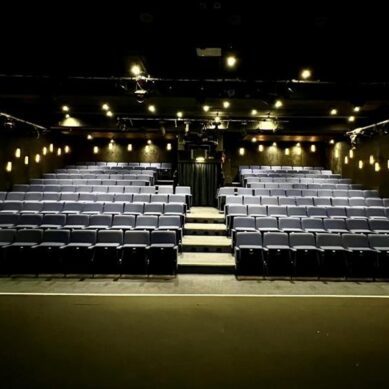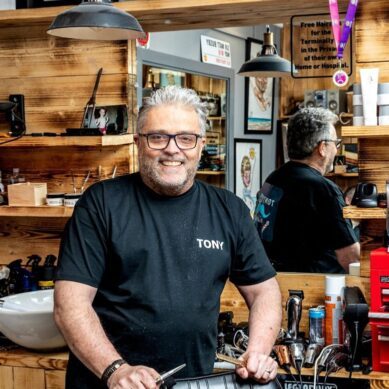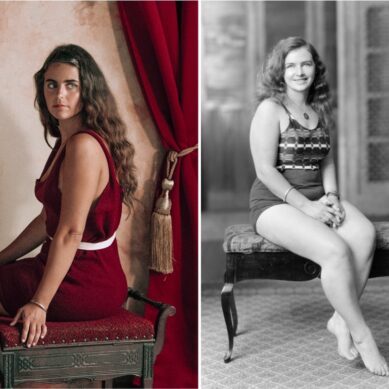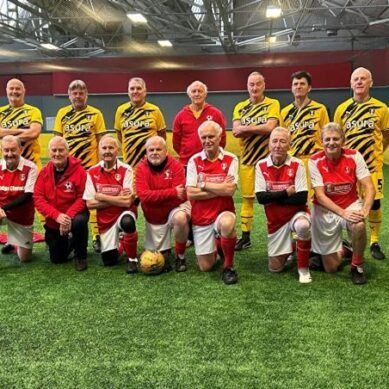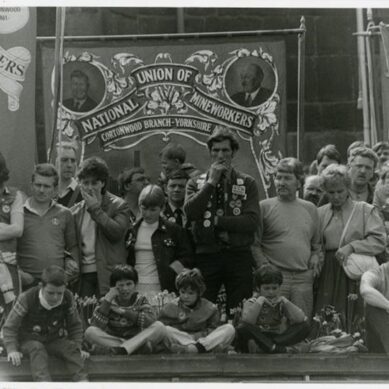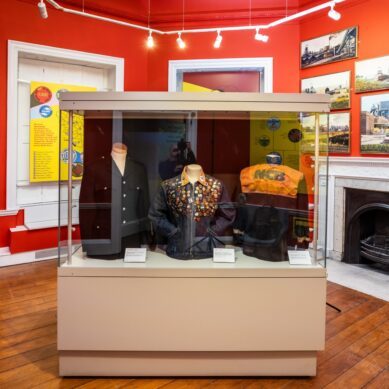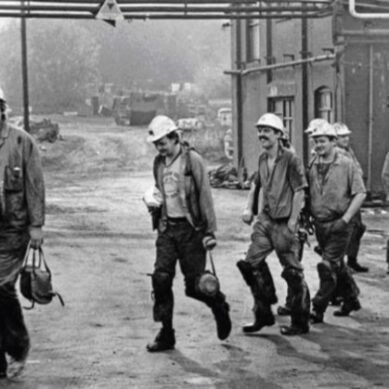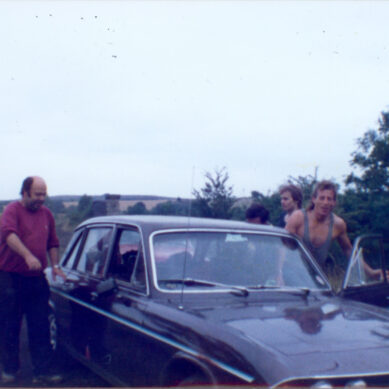Almost 180 years after they were first installed, the towering lamp standards will illuminate Wentworth Woodhouse’s historic front once again thanks to the work of three local businesses.
The six lamps that line the mansion’s iconic East Front were added in 1845 by Charles, the 5th Earl Fitzwilliam, who embraced the new trend for gas power. They were eventually converted to electricity, probably in around 1904 by the 7th Earl. But it’s been many decades since they blazed and, now badly corroded, they were in danger of falling apart.
Having now repaired a large swathe of the East Front roof and its bookend pavilions, Wentworth Woodhouse Preservation Trust recently turned the spotlight on restoring the lanterns.

Often, the hardest part of any heritage restoration task is finding a level of craftsmanship and quality materials which match those originally used at the house. But thanks to South Yorkshire’s rich industrial past, the Trust didn’t have to look far to find skilled craftsmen who still work to time-honoured traditions.
The complex lamp repair works were undertaken by Sheffield-based Ridgeway Forge, one of the country’s most reputable specialists in cast and wrought work. Run by blacksmith, Andrew Renwick, his team have worked on some of the nation’s best-known stately homes, most notably the repair work and conservation of the ornate Golden Gates at Chatsworth.

At Wentworth, the team were tasked with stripping, repairing and assembling the four-sided fretwork iron standards, which each weigh 600kg and are topped with a 40kg ornamental leaf iron collar supporting a 50kg glass lantern. After assessing their condition, the standards had to be carefully removed for transportation without damaging the one-piece, hand-carved stone plinths.
Andrew said: “Over the years rainwater had permeated, causing rust-jacking which forces the faces of metal apart. Numerous hasty repairs had been done to prevent them collapsing and bits had fallen off. Thankfully, most had been meticulously saved.
“Working out what went where has been like doing a 3D jigsaw puzzle, but we’ve found that we have 98 per cent of the pieces. Everything has been colour-coded so we know what belongs where.
“My team has put in over 1,000 hours. It would have been cheaper and easier to have modern replicas made to replace them. But the level of historic craftsmanship we are discovering at every end and turn is outstanding and simply throwing the originals away would have been a sacrilege.”
To strengthen the standards and lengthen their life, the lamps have each been given one new replacement panel.
Jason Dickinson of Elsecar’s MD Patterns, one of the county’s few remaining patternmakers, spent 148 hours replicating the panel’s pattern in wood. Jason started working in his father’s workshop 42 years ago aged ten. But he’s no stranger to a challenge, having created a pattern for a vintage Formula 1 racing car gearbox, as well as the Queen Mother’s memorial bronze lanterns lining the Mall on the approach to Buckingham Palace.

Jason said: “My job is like making a giant model. It involves taking hundreds of measurements to ensure everything is spot-on – patterns for engineering work have to be accurate to 10,000th of an inch – and many hours of work with woodworking tools.”
From the wooden replica, moulds were created in sand, into which molten iron was poured to create the new structures.
Finally, the glass lanterns have been restored by Kansa Lighting, who are also based at Elsecar. The lamps were reglazed with Georgian-style glass and wired with brass candelabra.

The lamp restoration work has been funded by the Elizabeth Cayzer Charitable Trust, a private trust which awards grants to organisations in the arts, culture, heritage and science sectors. Sarah McLeod, CEO of the Preservation Trust expressed her gratitude to the trust.
“Compared to the major repair programmes at the house, restoring and re-powering the lamp standards may seem a relatively small project. But it will make a huge difference to the grandeur of the East Front by night. A range of valuable heritage skills were needed and we were so fortunate to find specialists using these traditional methods close to home.
“We hope the lamp standards will be going back into place in early spring and look forward to the first ‘switch on’.”
